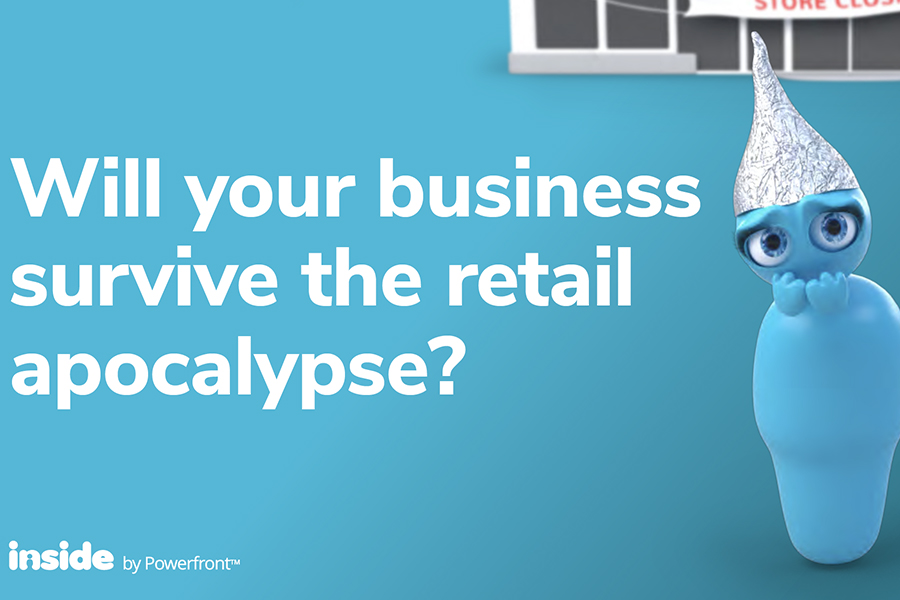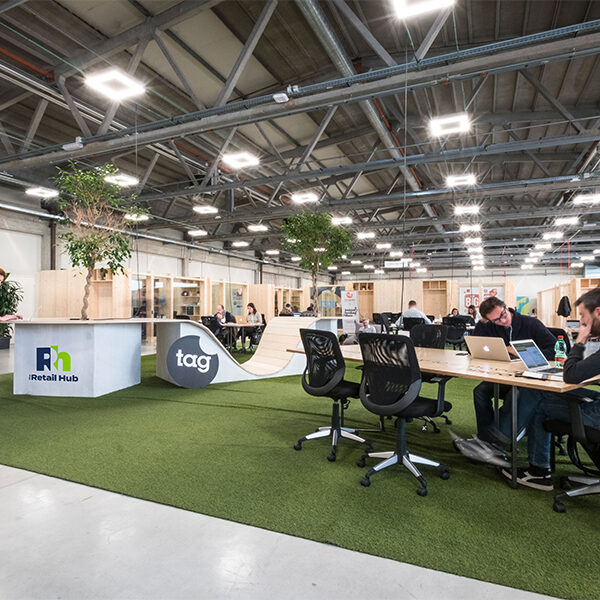
Will your business survive the retail apocalypse?
Take off your tin foil hat – the retail end times aren’t nigh. Rather than preparing for a retail apocalypse, prepare for a retail revolution. Rather than preparing for a retail apocalypse, prepare for a retail revolution.
Shift your thinking about physical storefronts and re-envision how you can integrate your brick-and-mortar space with your digital channels to create a more interesting, memorable, and higher-level customer experience.
Yet another major fashion brand has recently announced its plans to shutter hundreds of stores in the US and exiting 40 other countries altogether. Stating the obvious, the brand notes that the apparel industry is changing, with less foot traffic in shopping malls and massive increases in online sales. It’s worth nothing that only 16% of this company’s revenue last year came from eCommerce. The Washington Post reports that the average U.S. household spent $5,200 online in 2018, nearly a 50% increase from 2013, reflecting the continuing rapid growth of online shopping.
Customers want a personal relationship with their favorite brands.
Many other companies on the brink of bankruptcy smartly opted to refocus their energies on eCommerce. Brands like Zumiez and Target have reformatted their stores into small, localized distribution centers, cutting down the waiting period for consumers who buy online. Others, such as Casper and Carvana, are integrating their digital and in-store experiences and utilizing their storefronts to offer more experiential retail events. Notice that there are two common threads here – the more apparent being a shift to focusing on eCommerce, the more nuanced but even more critical focus on enhancing customer experience.
Customers want a personal relationship with their favorite brands and they expect that personal experience regardless of channel they are shopping.
It may seem like time to panic for brick-and-mortar retailers, but it’s not – it’s time to restrategize. Growth for growth’s sake, when it comes to brick-and-mortar, isn’t a strategy. Focus on your customer’s wants and needs, using data from their behavioral patterns. Customers want convenience, smooth shopping journeys, and amazing service with a personal touch.
Here’s your retail apocalypse survival guide in four simple steps.
Keep these in mind and as technology and online sales continue to trend, and you won’t have to go the way of many other retail giants.
1. Rethink brick and mortar
It isn’t the end for storefronts altogether. But many retailers are re-strategizing how they integrate their digital and physical stores. In fact, companies who were primarily digital are launching brick-and-mortar stores to allow users to pick up items they buy online or try before they buy. Other retailers are reducing their physical space and utilizing their stores as fulfillment centers, carrying a limited stock and encouraging customers to select the “ship-to-store” function. Small-format stores actually saw a year-over-year increase of 5%, so consider reducing and repurposing your square footage rather than closing your storefronts altogether.
2. Differentiate yourself
A major mistake the aforementioned company made was its failure to differentiate itself from competitors. As digitally-savvy competitors grew, they carried on as usual and expanded in the wrong areas. Rather than focusing on their digital presence and the products customers returned for most often, they expanded into various departments with little research that these were items customers would turn to them to shop for. Put simply, if you’re known for your apparel basics, on what basis would you decide to also expand into electronics and home goods? Adding more product is not always better, instead pinpoint a niche market. Other large department stores are seeing success adding smaller specialized storefronts focused on specific departments – it’s smart to hone in on your strengths rather than trying to offer everything.
3. Don’t ignore eCommerce
It seems plain to see, but leaving eCommerce in your blind spot could make or break your business. Invest correctly in your eCommerce from the get-go. Cutting corners means spending more money and resources later on down the road as more and more retail shifts to digital channels and your online business’s needs exceed budget solutions’ capabilities. Your eCommerce overhead will be significantly lower than your brick-and-mortar and sales will continue to increase if digital shopping channels are properly executed and maintained. Invest in the best online retail solutions, provide the same service on your website as you would in stores, and watch your eCommerce sales grow.
4. Shift your workforce
Shuttering stores doesn’t have to equate to redundant positions. Utilize and retrain your in-store staff for your online customer service team. Chances are they’re already fully educated on merchandise information as well as how to foster a personal connection with customers. Armed with product knowledge, a unified agent desktop will reduce training times for your existing workforce, enabling them to transition readily to online sales.
In partnership with: Inside by PowerFront


